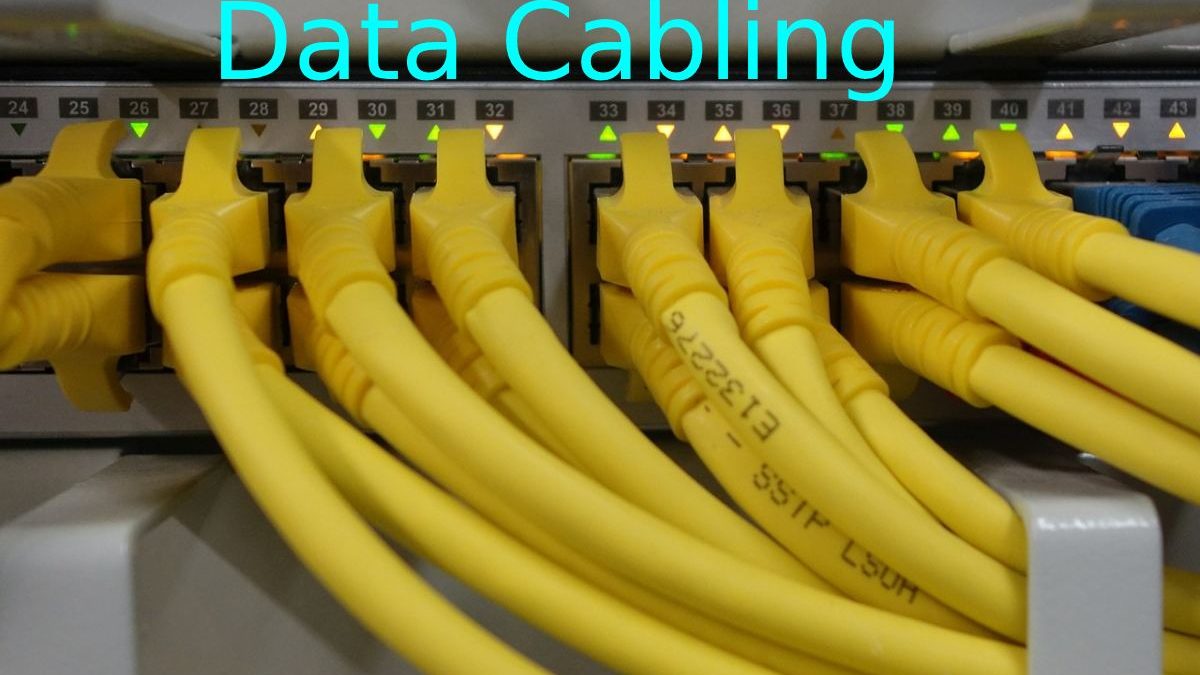Table of Contents
What Is The Data Cabling Used For?
Previously, data cabling was of interest only to high-tech companies. But this is no longer the limited domain of these companies. Thanks to technological advances and falling prices, network cabling is now easily affordable for even the smallest businesses. And that’s good news because it has the potential to take your business to the next level. It does this by simultaneously improving your productivity and maximizing your competitiveness.
What Is Data Cabling?
We all know what cables are, but data cabling is a little different. And cabling in office, retail, warehouse, and educational environments are essential to their operation. Thus, data cable installations are interesting for almost every company.
In its simplest definition, network or data cabling includes multiple devices within a computer network that are connect by cables. This computer cabling is available in different categories such as CAT5e, CAT6 and fibre optic options. Typical data cable installations run from a specific device to a central communications cabinet to facilitate data flow.
How Your Business Uses Data Cabling
Data Cables Or Structured Cabling Can Give Your Business A Significant Boost When Used In The Following Ways:
Connectivity: The most apparent advantage of data cables is connecting multiple devices to a central infrastructure. It allows information to flow easily and quickly from point A to B. Almost every device in your business, from copiers to network servers, should be able to benefit from data cabling.
Data Closet Moves: Structured cabling solutions are perfect for moving data closets. Traditionally, computer cabling consisted of many different types of cables, which contributed to complex configurations. But the simplicity of modern wiring ensures that moving cabinets can be done quickly and with minimal effort.
Improved competitiveness: Modern data cable solutions have made businesses more competitive. For example, the growing popularity of Voice over Internet Protocol (VoIP) has allowed telecommunications to use a single data point for telephone and Internet connections. As a result, it maximizes space and the efficiency of your IT setup. And that, in turn, allows you to improve your IT systems and grow your business.
Increase scalability: Using structured cabling gives businesses the ability to scale. In addition, data cable installations ensure the growth and longevity of your IT and telecommunications systems through the compatibility of different data cables.
With Cat5e, Cat6 or Cat6a cabling now available to every business, it makes sense to implement it into your infrastructure. Perfect for any IT setup, data cabling can future-proof your technology and deliver results that increase your productivity.
Why Is Structured Cabling Important?
Structured cabling dramatically simplifies the installation of a cabling infrastructure supporting a variety of voice and data communication devices. Whether you’re installing a coaxial jack in a house or wiring a skyscraper, all components are manufactured to specific standards for electrical transmission, resistance, wire lengths, connectors, and wire construction.
Benefits Of Structured Cabling
Installing, troubleshooting and maintaining cabling infrastructure is greatly simplified with structured cabling. It helps reduce costs by standardizing all hardware components and cable types. It also saves installation time as connections and wiring are greatly simplified. The ANSI/TIA-568 standard meets virtually all types of residential and commercial wiring needs.
- Access Facilities (EF). Telecommunications equipment entering a building or dwelling from the outside, from a local service provider or a private network, is routed through a conduit through an opening in the exterior wall. This cabling leads to a room where other equipment is deploy, including network connection points, patch panels, power racks, and more.

